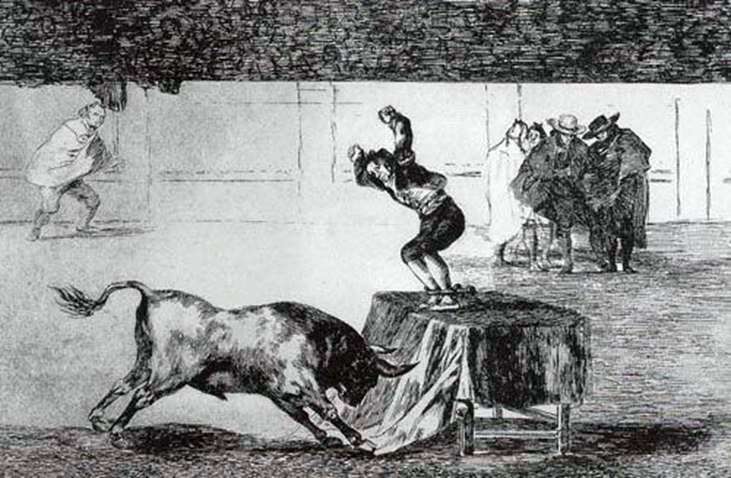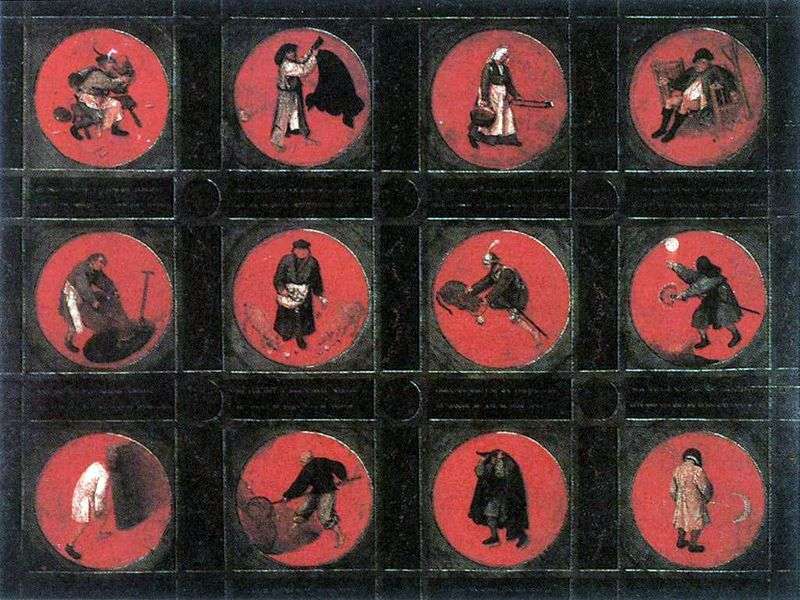
Goya was one of the most skillful and original engraving artists of his time. In this genre he was guided by Durer and Rembrandt. Technically, the engravings of Goya are highly complex. Most of them are attributed to etchings, although in reality the artist often used several techniques to create one plate at once. Especially he liked the combination of engraving with aquatinthe, which makes it possible to create a feathering effect. After the appearance in Spain of lithography, invented in 1798, the artist quickly managed to master this technique. Goya etchings, as a rule, are separate sheets of large series. The first was the series of copies begun in 1778 from the works of Velasquez from the royal collection. It was followed by four more major series: “Capricios”, 1797-98; “The woes of the war” 1810-14; “Tavromachia”, 1815-16; Proverbs, approx. 1816-23. In addition, after moving to France, Goya created four etchings, united by the theme of bullfighting. In life, the artist’s etchings were practically unknown. The “woes of war” and “Proverbs” were first published only after his death. Most of the original copper plates engraved by Goya are kept at the Royal Academy of San Fernando in Madrid.
 Tavromachia – Francisco de Goya
Tavromachia – Francisco de Goya Engravings “Caprichos” “Disparate” (Senselessness) by Francisco de Goya
Engravings “Caprichos” “Disparate” (Senselessness) by Francisco de Goya The woes of the war by Francisco de Goya
The woes of the war by Francisco de Goya Love and Death by Francisco de Goya
Love and Death by Francisco de Goya Engravings “Caprichos” (Caprices) “Horrors of War” by Francisco de Goya
Engravings “Caprichos” (Caprices) “Horrors of War” by Francisco de Goya Colossus by Francisco de Goya
Colossus by Francisco de Goya Twelve Proverbs by Peter Brueghel
Twelve Proverbs by Peter Brueghel Engravings by “Caprichos” (Caprices) – Francisco de Goya
Engravings by “Caprichos” (Caprices) – Francisco de Goya